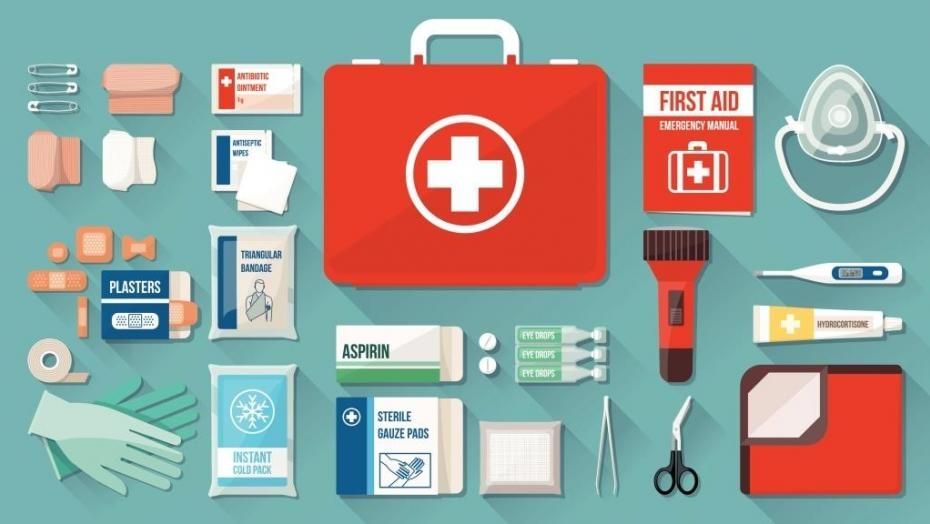How to Prepare a Disaster and Emergency Bag? Earthquake Bag Preparation
How to Prepare a Disaster and Emergency Bag? Earthquake Bag Preparation

Taking precautions against natural disasters that can occur unexpectedly and being prepared for any situation is important. Many cities in our country are located on fault lines, which especially necessitates preparedness for earthquakes.
After a natural disaster, it may not be easy to access your emergency needs, such as food and water. You may need to provide first aid for sudden injuries yourself and may have difficulty meeting some basic needs to sustain your life until help arrives. In such unwanted situations, preparing a disaster and emergency bag can be a lifesaver for both yourself and your loved ones.
You can find information about what to consider when preparing an emergency bag in the continuation of our article.
What Is a Disaster and Emergency Bag?
A disaster and emergency bag is a bag that contains at least the essential food, water, and other necessary materials to meet the basic needs of individuals affected by a disaster for at least the first 72 hours. In addition to your own needs, it is beneficial to have essential items for the people you are responsible for in this bag. Important documents such as identification, passport, diploma, and property deeds may also be included in the disaster and emergency bag. Among the items you will need in any disaster are a first aid kit, hygiene supplies, and various electronic devices. Especially in Turkey, a country surrounded by three seas and prone to earthquakes, preparing an earthquake bag is crucial. Having an easily accessible earthquake bag ready for a possible earthquake is of vital importance.
The Importance of Having an Earthquake Bag
Thanks to the contents of the earthquake bag, you can meet your needs for several days when you evacuate your location after an earthquake. Without such a bag, when you leave home, you may encounter unexpected problems in meeting your basic needs outdoors, which is why having an earthquake bag is extremely important. You cannot know in what condition the buildings around you will be after an earthquake. It may take time for aid to reach heavily damaged areas. Therefore, it is essential to have enough supplies with you to spend the first three days in good health. First aid materials such as band-aids, gauze, cotton, and iodine solution allow you to take necessary precautions for minor injuries until medical teams arrive. Otherwise, open wounds can pose an infection risk. With an earthquake bag, you can minimize this risk. Even if you have evacuated your location during an earthquake, it is uncertain whether you will be able to re-enter the building, so having a bag with photocopies of important documents can help you overcome various difficulties in the coming days.
What Should Be in an Earthquake Kit?
While the contents of an earthquake kit may vary depending on personal needs, there are certain essential items that everyone should have in their earthquake kit when considering basic necessities. Unless there are specific circumstances, earthquake kit contents can be categorized into a few key areas. These categories include food, important documents, water, clothing, hygiene items, and other necessities. The basic needs list in each category can be expanded based on the size of the kit, the number of people, and specific situations. Here's a summary of what should be in every earthquake kit:
Food: In the aftermath of an earthquake, it's essential to have non-perishable food that will keep you satiated and is rich in carbohydrates and vitamins. These foods should also be able to prevent dehydration. Examples of such foods that can be included in an earthquake kit are canned goods, dried fruits and nuts, canned fruit juices, tahini, molasses, and more. If you have babies in your care, include baby formula, and if you have pets, consider pet-specific food in this category.
Water: You should have an adequate supply of water in your earthquake kit, considering all the individuals living in your household.
Copies of important documents: Original copies of identification, passports, diplomas, driver's licenses, property deeds, permits, bank documents, health cards, and mandatory earthquake insurance policies can be difficult to access after an earthquake. Therefore, it's beneficial to keep photocopies of these documents in your earthquake kit.
Clothing: For adults, you can include underwear, socks, seasonal clothing, and rain gear in your earthquake kit. For babies, items like diapers, wet wipes, sleeping bags, and baby blankets can be included.
Hygiene products: Another critical concern after natural disasters like earthquakes is the risk of microbial environments and infectious diseases. Taking hygiene precautions in such situations is essential for preserving your health. Basic hygiene products that you can include in your earthquake kit are soap, cologne, hand sanitizer, toilet paper, wet wipes, paper towels, sanitary pads, toothbrush, and toothpaste, among others.
Other items: Having a small first aid kit for initial wound care and preventive measures is crucial. You can include a small first aid kit in your earthquake kit. Additionally, if any family member requires regular medication, keep backups of their medications in the earthquake kit. To facilitate rescue teams finding you and making your presence known, it's important to include a whistle in your earthquake kit. Yelling or signaling from under debris is not recommended as it's the last resort. Instead, a whistle can help you make your presence heard more easily. Another essential item to have in case of darkness is a flashlight with spare batteries. Portable chargers and spare charging cables for your electronic devices are also beneficial. In addition, you can consider adding small tools such as scissors and a pocket knife to your earthquake kit.
When preparing an earthquake kit, consider the places where you spend the most time in your daily life and your specific needs in those places. Emergency and disaster kits for home and workplace are the first priority. However, it's also advisable to have an earthquake kit at schools, especially for children. To ensure your earthquake kit is easy to carry, opt for lightweight and practical items that cater to your individual needs.




